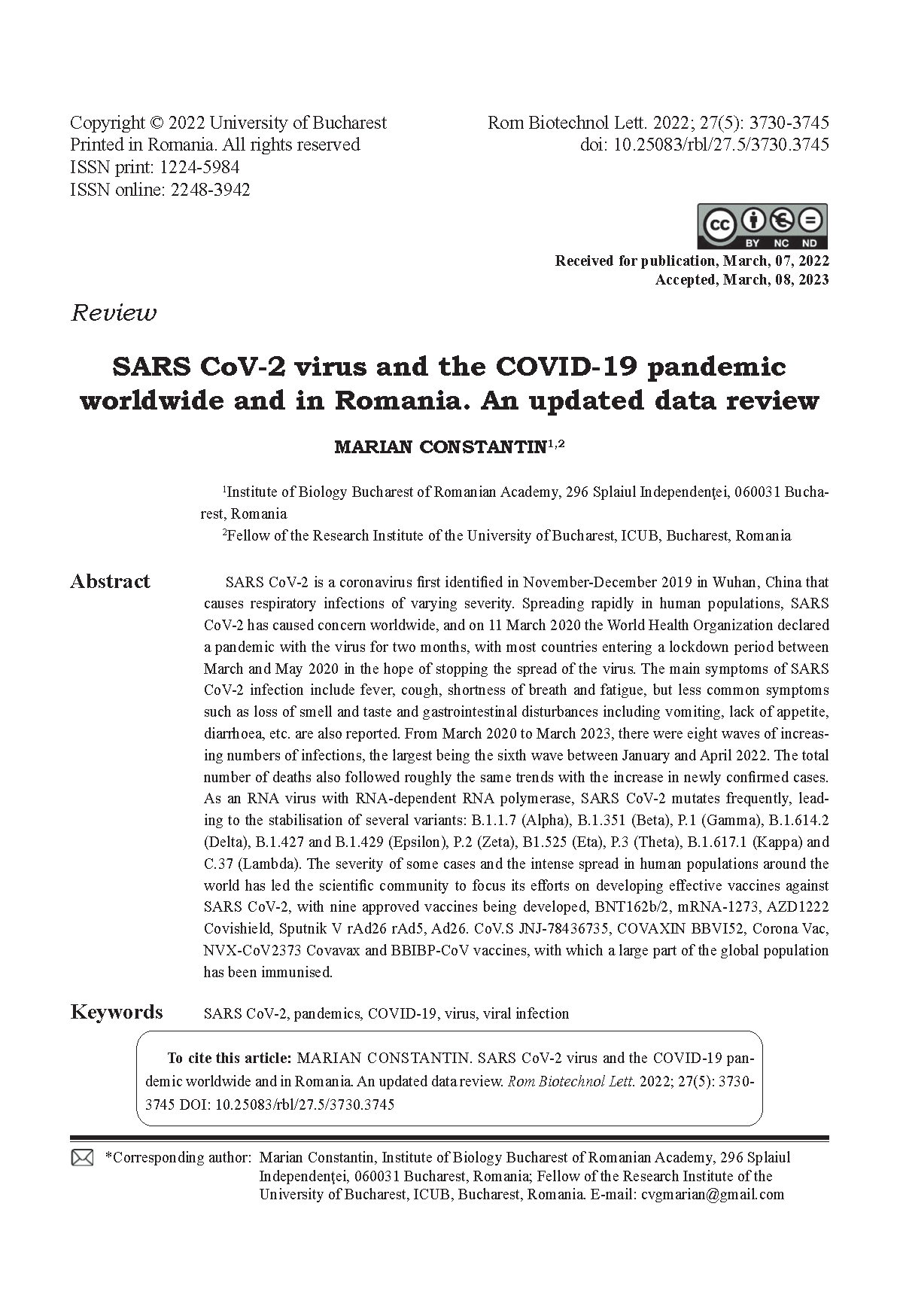SARS CoV-2 virus and the COVID-19 pandemic worldwide and in Romania. An updated data review
DOI:
https://doi.org/10.25083/rbl/27.5/3730.3745Keywords:
SARS CoV-2, pandemics, COVID-19, virus, viral infectionAbstract
SARS CoV-2 is a coronavirus first identified in November-December 2019 in Wuhan, China that causes respiratory infections of varying severity. Spreading rapidly in human populations, SARS CoV-2 has caused concern worldwide, and on 11 March 2020 the World Health Organization declared a pandemic with the virus for two months, with most countries entering a lockdown period between March and May 2020 in the hope of stopping the spread of the virus. The main symptoms of SARS CoV-2 infection include fever, cough, shortness of breath and fatigue, but less common symptoms such as loss of smell and taste and gastrointestinal disturbances including vomiting, lack of appetite, diarrhoea, etc. are also reported. From March 2020 to March 2023, there were eight waves of increasing numbers of infections, the largest being the sixth wave between January and April 2022. The total number of deaths also followed roughly the same trends with the increase in newly confirmed cases.
As an RNA virus with RNA-dependent RNA polymerase, SARS CoV-2 mutates frequently, leading to the stabilisation of several variants: B.1.1.7 (Alpha), B.1.351 (Beta), P.1 (Gamma), B.1.614.2 (Delta), B.1.427 and B.1.429 (Epsilon), P.2 (Zeta), B1.525 (Eta), P.3 (Theta), B.1.617.1 (Kappa) and C.37 (Lambda). The severity of some cases and the intense spread in human populations around the
world has led the scientific community to focus its efforts on developing effective vaccines against SARS CoV-2, with nine approved vaccines being developed, BNT162b/2, mRNA-1273, AZD1222 Covishield, Sputnik V rAd26 rAd5, Ad26. CoV.S JNJ-78436735, COVAXIN BBVI52, Corona Vac, NVX-CoV2373 Covavax and BBIBP-CoV vaccines, with which a large part of the global population has been immunised.




